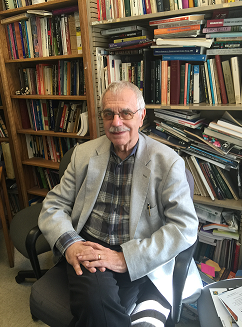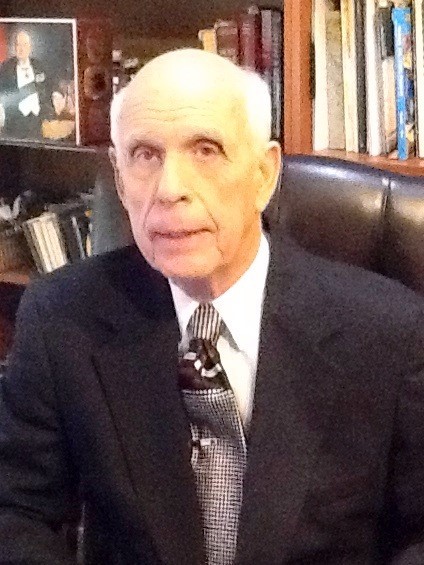 The Application of Systems Engineering to the Affordable Care Act and Other Lawmaking Practices
The Application of Systems Engineering to the Affordable Care Act and Other Lawmaking Practices
Thy C. Guintivano
The Patient Protection and Affordable Care Act, often referred to as the Affordable Care Act (ACA), is a United States federal statute enacted by Congress and signed into law by President Barack Obama on March 23, 2010. The provisions represent the U.S. healthcare system’s most significant regulatory overhaul and expansion of coverage since the passage of Medicare and Medicaid in 1965 and it mainly expanded access to health insurance and changed the way federal government pays doctors. These provisions required new taxes and conformance of health insurance that impacted small businesses, large employers, and most Americans.
Many complexities impacted the preparation of ACA implementation and adherence to these provisions. This paper specifically discusses how the systems engineering framework was applied to systems validation activities and it describes unique insights, challenges, and future opportunities where systems engineering can benefit future lawmaking initiatives.
Biography
Thy Guintivano is a Systems Engineer and Project Manager who helps organizations achieve their objectives through the realization of systems development and integration activities. She received her Master of Science in Systems Engineering from the Johns Hopkins University and Master of Science in Administration from Central Michigan University. She holds the Project Management Professional (PMP) and Information Technology Infrastructure Library (ITIL v3) certifications.
As a Systems Engineer, she has worked for Booz Allen Hamilton, Deloitte, and Intuit. She leads business case analysis, requirements engineering, user interface design, test planning, and governance activities.
Her past clients include:
- A Fortune 500 Energy and Utilities company
- the Internal Revenue Service
- the Department of Defense
- Executives of major organizations

 System Dynamics Behaviors for Modeling Lawmaking Processes
System Dynamics Behaviors for Modeling Lawmaking Processes
Raymond Madachy, PhD
System dynamics is a simulation methodology for modeling continuous systems. It provides a rich and integrative framework for investigating lawmaking process phenomena and inter-relationships from a holistic perspective. This paper continues last year's work on common structures for lawmaking processes by elaborating the dynamic behaviors resulting from the structures. The behaviors are visualized as process trends over time. These model structures and associated behaviors are process patterns that frequently occur, and are provided as reusable building blocks to assemble larger models. Examples are shown of typical behaviors resulting from the elemental structures, and larger models demonstrating behavior patterns of lawmaking processes including feedback loops.
This paper reviews basic system dynamics elements and their applied instances in lawmaking, generic flow processes which are microstructures with characteristic behaviors, larger infrastructures producing more complex behaviors, and flow chains which are infrastructures consisting of a sequence of levels and rates (stocks and flows) that are model portion backbones. New examples of assembled small models for lawmaking applications will be described, simulated, and conclusions drawn from the behaviors.
Even small system dynamics models have been shown useful for understanding complex public policy issues and thus well suited to assess specific laws or aspects of overall local, national and international lawmaking. The developed open source models will be provided to the community to incorporate, adapt and apply for lawmaking.
Biography
Modeling and simulation can help improve lawmaking processes. System dynamics is a simulation methodology for modeling continuous systems that provides a rich and integrative framework for investigating lawmaking process phenomena and inter-relationships from a holistic perspective. Structures for modeling these processes are provided as reusable building blocks. These structures and their behaviors are process patterns that frequently occur. Examples are shown assembling these recurring structures into larger models demonstrating behavior patterns of lawmaking processes including feedback loops. The behaviors are visualized as process trends over time.
This paper overviews: 1) basic system dynamics elements and their applied instances in lawmaking, 2) generic flow processes which are small microstructures comprised of a few elements serving as modeling molecules with characteristic behaviors, 3) infrastructures composed of several microstructures producing more complex behaviors, 4) flow chains which are infrastructures consisting of a sequence of levels and rates (stocks and flows) that are model portion backbones, and 5) introductory examples of lawmaking process structures.
Even small system dynamics models have been shown useful for understanding complex public policy issues, and thus well suited to assess specific laws and/or aspects of local, national and international lawmaking processes. The structures and applied examples are provided as open source models for the community to incorporate, adapt and apply for lawmaking.




An Architecture Scaffolding for Analyzing Overlap and Conflict between Laws
Beryl Bellman, PhD, Prakash Rao, Ann Reedy, PhD
Based on years of research and practice in the field of government and defense laws and mandates for enterprise architecture, we present a systematic method for analysis of multiple laws to find intersections, overlaps and conflicts using the six interrogatives framed by Zachman and an ontology based approach. Use of this approach in a consistent manner lends itself to automation and the application of data analytics to the repository of architecture elements. Our approach provides a standard way of describing the key elements of a law and can be used to determine conflicts and overlaps between laws. This approach can also be applied to describe the full stakeholder context of a proposed law to determine impacts and omissions. The use of the 6 interrogatives provides a complete decomposition of the architecture elements that are embedded inside the narratives of the laws and provides a method to transform a narrative, human intensive understanding into a man-machine understanding problem.
Photo
Biographies
Beryl Bellman, PhD
Dr. Bellman is co-founder and Academic Director of the FEAC™ Institute and is also a tenured full Professor of Communication Studies at California State University at Los Angeles. He has been involved in teaching, research; publishing, consulting and project management in the fields in Enterprise Architecture for over 45 years, and has an excellent reputation in both academe and professional consulting. He held faculty and research positions at the University of California at San Diego, SUNY Stonybrook, CUNY Graduate Center and California Institute of the Arts, and was Research Director of the Western Behavioral Sciences Institute prior to his current university position. In addition to academic positions he has thirty plus years concurrent consulting experience in both government and the private sectors. He holds enterprise architecture certifications in FEAF, DoDAF, Zachman, TOGAF 8 and TOGAF 9.
Prakash Rao
Prakash Rao has 38 years of experience as a researcher, innovator and entrepreneur involved with startup, management, product innovation and evolution of three different companies; as a teacher and trainer for Enterprise Architecture for the US Air Force for three years and a faculty member at the FEAC Institute for more than 7 years, and an early pioneer, consultant and practitioner of enterprise architecture for more than 20 years.
With a first degree as an Electronics Engineer, Prakash started his professional career at Honeywell Corporation in the Corporate Technology Center/ Computer Sciences Center after completing graduate studies in Computer Science at the University of Minnesota. He worked as a Research Scientist/Senior Research Scientist working on innovations in electronic Design Automation and Architecture development.
Prakash is the co-author of two books on Enterprise Architecture and Data Warehousing published by McGraw-Hill and Que/MacMillan respectively and has presented at many conferences in his professional career.
Currently he is the Chief Executive Officer of Enterprise Sherpas LLC in Fairfax, Virginia, USA innovating tools and techniques in enterprise architecting that leverage and adapt some of the concepts of electronic design automation – concepts that have revolutionized the design of complex electronic systems over the last twenty years and delivered the products of today. Enterprise Sherpas LLC provides mentoring and coaching in the use of rapid EA techniques for competitive advantage and to fuel corporate fire-fighting efforts using innovative tools, technique and methodologies.
Prakash Rao has been actively working in Information Technology since 1977, and in Information Resource Management since 1988 and was one of the co-founders of the first commercial standards based IRM repository company more than 15 years ago. With more than 30 combined years of experience in computer science research and development, modeling and simulation, software engineering and lifecycle management, departmental, corporate and executive management and strategy, enterprise architecture consulting, training and coaching, he was also the author of one of the earliest books on Data Warehousing "Client Server Guide to Data Warehousing" 1995 published internationally in English, Spanish, Dutch and German. He has been involved in the training of more than 600 enterprise architects at the executive, management and staff levels over a period of three years at the US Air Force and several hundreds more as a faculty member at the FEAC Institute.
Prakash is a Certified Enterprise Architect with an MS in Computer Science from the University of Minnesota, Minneapolis and a BSEE from Bangalore University, India. He is a member of several professional societies and participates actively in outreach and advocacy for enterprise architecture amongst startup professionals, as well as seasoned corporate managers and the lay public.
Ann Reedy, PhD
Dr. Reedy has a PhD in Computer Science with more than 40 years of experience in academia and Federal research and contracting communities. She taught computer science at both the University of Iowa and the University of Nebraska, Lincoln. After working with analyst support systems and software development environments in the Federal contracting community, she focused on Enterprise Architecture. While working for the MITRE Corporation, a Federally Funded Research and Development Center, she was one of the principal developers and editors of the C4ISR Architecture Framework and worked on its evolution into the DoD Architecture Framework (DoDAF).
She has adapted the DoDAF for various federal organizations and agencies and supported a wide variety of DoDAF based enterprise architecture startups as well as helping agencies develop enterprise architecture governance processes. These agencies included Treasury, Customs, Internal Revenue Service, and Federal Aviation Administration, as well as DoD projects. While at MITRE, her research topics include the integration of security concerns and the use of pattern based approaches in enterprise architecture.
She taught enterprise architecture to groups supporting the U.S. Federal government through the MITRE Institute and through the Federated Enterprise Architecture Certification (FEAC) Institute for over 10 years, as well as co-authoring a textbook for the FEAC.
Now retired from MITRE, she continues to pursue research into new enterprise architecture concepts and approaches.

 Legislative Bills: Design Criteria and Assessment
Legislative Bills: Design Criteria and Assessment
David Schrunk, MD
The task of engineers is to solve problems by the creation of new, efficacious implements, devices, and systems. To meet this design challenge, engineers observe problem-solving protocols and apply appropriate design tools and expertise for the creation of new tools, or technology. Similarly, the task of lawmakers of government is to solve societal problems by the creation of new law-solutions (laws of government). This paper reports on a study that evaluated the extent to which the first steps of the lawmaking process, i.e., “law-design engineering,” adhere to established, problem-solving standards for the creation of new tools. The study focused on bills (proposed new laws) that were submitted to the Senate of the Legislature of the State of California during the 2016 legislative session. The study observed that the present lawmaking process does not meet established problem-solving protocols and design standards, and it thereby places the public at risk from the issuance of poorly designed laws. It is recommended, for the benefit of legislators and the public they serve, that new high-quality design standards be developed and applied to the creation of new laws of government.
Photo
Biography
David G. Schrunk is an aerospace engineer and medical doctor. He is the president and founder of the Science of Laws Institute of Poway, California, and is the author of multiple publications in the science and law literature on topics related to the expansion of science to encompass laws of government and the lawmaking process. Dr. Schrunk is also the author of the book, THE END OF CHAOS: Quality Laws and the Ascendancy of Democracy, published by QL Press, 2005.



Hitchins’ 5-Layer Model as an Evaluation Framework for Regulations
Mike Green, Raymond Madachy, PhD
The relationship between society and laws is well understood. At the macro level, laws provide structure to guide behavior and systems theory is replete with multiple models that describe various aspects of that behavior. This paper proposes using a 5-layer model of systems engineering developed by Hitchins to examine the impact of laws and regulations on the various socio-economic structures of a society. The specific focus is a simple example of energy policy with an emphasis on developing causal relationships between laws and society using systems theory. The five layers: socio-economic, industry, business-enterprise, project, and product form a nested relationship with product at the center. Causal loop models based upon N2 diagrams show the interactions within and between layers providing insight into a change in policy.
Photo
Biographies
John Green
John M. Green is a Senior Lecturer in the Department of Systems Engineering at the Naval Postgraduate School where his teaching and research is focused on combat system engineering and combat system architectures. In the 15 years since the inception of the MSSE program, he has advised over 60 MSSE Capstone projects of three quarters duration each. Prior to this he worked in industry for 18 years. He was Manager of Advanced Systems at ITT Gilfillan in Van Nuys, CA where he led a team developing concepts for high power solid state radars and he also worked for Lockheed Martin in Moorestown, NJ where he was Technical Director for the Norwegian Frigate project and System Engineer for the Taiwanese PFG-2 Class Combat System design. He also worked several data fusion projects including CEC and JCTN. During his Navy career, he served on a variety of ships including six submarines rising from Seaman Recruit to Lieutenant Commander. He is a 1982 graduate of the Naval War College, College of Command and Staff.
His MBA (1998) and MS in Computer Science (1986) are from the University of New Haven. He also has a MA in International Relations from Salve Regina College (1984), a BS in Physics from Saginaw Valley State University (1972) and an AS in Electronics from Southwestern College (1969). He is current pursuing a doctorate in Systems Engineering from SMU.
He is a Senior Member of AIAA and a member of the Military Operations Research Society, the American Society of Naval Engineers, the Institute for Operations Research and Management Science, the Association of Old Crows, SPIE, ISIF, and the International Council on Systems Engineering.
Raymond Madachy, PhD
Modeling and simulation can help improve lawmaking processes. System dynamics is a simulation methodology for modeling continuous systems that provides a rich and integrative framework for investigating lawmaking process phenomena and inter-relationships from a holistic perspective. Structures for modeling these processes are provided as reusable building blocks. These structures and their behaviors are process patterns that frequently occur. Examples are shown assembling these recurring structures into larger models demonstrating behavior patterns of lawmaking processes including feedback loops. The behaviors are visualized as process trends over time.
This paper overviews: 1) basic system dynamics elements and their applied instances in lawmaking, 2) generic flow processes which are small microstructures comprised of a few elements serving as modeling molecules with characteristic behaviors, 3) infrastructures composed of several microstructures producing more complex behaviors, 4) flow chains which are infrastructures consisting of a sequence of levels and rates (stocks and flows) that are model portion backbones, and 5) introductory examples of lawmaking process structures.
Even small system dynamics models have been shown useful for understanding complex public policy issues, and thus well suited to assess specific laws and/or aspects of local, national and international lawmaking processes. The structures and applied examples are provided as open source models for the community to incorporate, adapt and apply for lawmaking.

 Maturing Humanity Through the Sciences of Law, Policy and Space
Maturing Humanity Through the Sciences of Law, Policy and Space
Bob Krone, PhD
Humanity's future hinges on the success of efforts to insure a supportive environment, needed resources, and continuous improvement of health and welfare for all its citizens on Earth and for humans who settle in Space. The Law of Space Abundance was created by leadership of the Kepler Space Institute in 2009. The Law states: "Space offers an abundance of resources for humankind’s needs." The law was not legislated by humans. It accurately describes what exists in the universe. The capturing of those resources is now being designed and planned. The unprecedented efforts to do so will involve entirely new systems for Space exploration, development and the creation of human settlements in Lunar Orbits, on the Moon, Mars and elsewhere in the Solar System. This paper addresses some of the needs of the human control and management process for that massive effort. In particular, it focuses on the leadership, legal and governance portions of that huge vision. The major finding of the paper is that the concepts, principles and legal systems being designed and accumulated by members of the Science of Laws Institute -- to overcome historic legal systems’ inadequacies, problems and failures -- provide the foundations for solving the human behavior needs for the future of humans in Space. Those foundations can be found in the published issues of the Science of Laws Journal.
Biography
Dr. Bob Krone, currently 87 years old, is in his fourth professional career. Those four careers were: The United States Air Force (1952-1975), The University of Southern California in Los Angeles (1975-1993), a mixed career with La Sierra University and the University of South Australia (1993-2007), and The Global Space Community (1980 - present). Bob has authored or co-authored twelve books and ninety professional journal articles, including twenty-seven articles in the published issues of The Journal of Space Philosophy, accessible at: www.keplerspaceinstitute.com/JSP.
Bob reviews his 87 years in his article, “A Personal Philosophy: Know Thyself” in the Spring 2015 Issue, Vol 5, No. 1 of The Journal of Space Philosophy.
